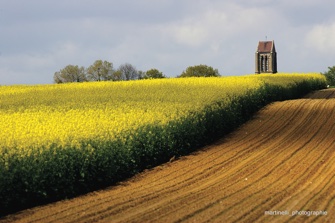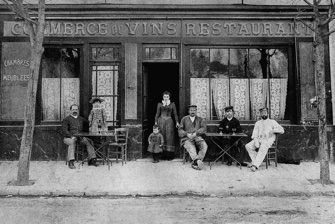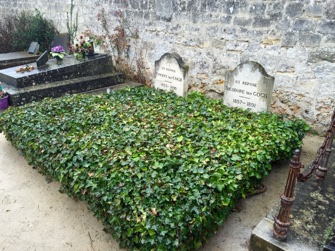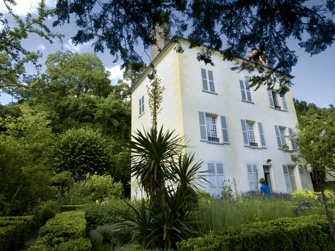Seventy Days,
Eighty Masterpieces

Amazingly, although Vincent Van Gogh spent only 70 days (May 20-July 29, 1890) in the town of Auvers-sur-Oise, located an hour north of Paris, he made some 80 paintings there during his last days on earth. Not surprisingly, the town has become a pilgrimage site for Van Gogh lovers, and it is now gearing up for the 2015 summer season, which marks the 125th anniversary of his death, with a series of exhibitions and events and even a new tourist office.
The real attraction for most visitors is the small, humble room under the eaves in the Auberge Ravoux where Van Gogh lived and

died, the victim of a self-inflicted gunshot wound that took two days to finish him off. The room has been left untouched and empty, with the exception of a single chair, the one his brother Theo sat on while keeping vigil over him during his last two days. Owner Dominique-Charles Janssens hopes to soon acquire a painting by Van Gogh to hang in the room, where the artist stacked up dozens of his works under his simple bed. Many of those paintings, which were hung on the walls surrounding his casket, were given away to friends at his funeral, held in the inn because the local priest refused use of the church for a suicide.
Another touching reminder of the close relationship between Vincent and Theo Van Gogh is their plain, ivy-covered graves side-by-side in the local cemetery. A walk there takes you past a wheat field and a number of

other sites the artist painted, marked by reproductions placed at the same vantage point they were painted from. The Auberge Ravoux, now a historical monument, still looks much as it did in Van Gogh’s day, and its restaurant continues to serve traditional French meals.
Once you have seen the inn and visited Van Gogh’s room and grave, another must-stop is the Musée de l’Absinthe, which offers a fascinating tour through the history of the anise-flavored liqueur first given to soldiers in the mid-19th century in hopes that it would prevent malaria. It then became a chic boisson among artists and the bourgeoisie before being demonized as a cause of mental illness and depravity, and banned in 1914. Today it is once again legal in France and many other countries, and you can book a tasting at the end of your visit to the museum, which has a number of absinthe-related artworks and posters, many by renowned artists, as well as lots of implements, including the absinthe spoon that was borrowed for (and improperly used) in Francis Ford Coppola’s Dracula in 1993.
Film lovers will want to continue their tour at the Musée Daubigny, named for local artist Charles-François Daubigny (1817-78), which owns a collection of his works and is currently presenting an exhibition on the making of three films on the life of Van Gogh: Vincente Minnelli’s Lust for Life (1955), which starred Kirk Douglas and used photos of real paintings by the artist; Akira Kurosawa’s Dreams (1989), in which Martin Scorsese plays Van Gogh in a sequence shot on location in Auvers; and Maurice Pialat’s Van Gogh (1991), which covers the last three months of the artist’s life. On show are film clips, posters, paintings, drawings and documents.
A trip to Auvers would not be complete without a visit to the house of Paul-Ferdinand Gachet, the doctor who looked after Van Gogh’s mental

and physical health while he was in Auvers, and whose portrait was famously painted by the artist three times. An engraver himself, he and his artist friends, including Van Gogh, Pissarro and Cézanne, often worked together in the doctor’s attic studio. Although it is not open to the public, I recently had the chance to visit the simple, light-filled space and see the dabs of paint left on the wall a century and a quarter ago by three of history’s great artists. The house’s lovely garden was painted by Van Gogh several times.
A small exhibition of prints by the popular 19th-century publishing house Goupil is currently on show in Dr. Gachet’s house, many of them compared with the original paintings by well-known artists to show how the works were revised for the general public.
Finally, for children, perhaps, or for those who can’t do without multimedia, an exhibition of Van Gogh-inspired video installations is on show in the Orangery of the town’s handsome château, while contemporary art lovers may enjoy the comic-book-influenced exhibition of works by Hervé di Rosa at the Galerie d’Art Contemporain d’Auvers-sur-Oise.
Click here for train information, and click here for more details on the places mentioned above.
Favorite
